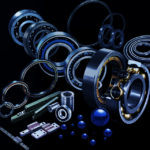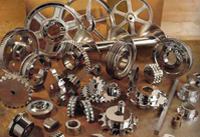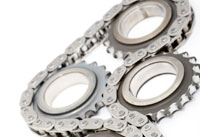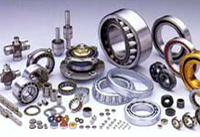
Bearings are used in a multitude of applications, both large and small, that impact just about every single person’s daily life. Whether it is in a small way at home or on a large scale in an industrial setting, bearings are an integral part of many mechanical applications. There are a variety of different types of bearings and they each serve a unique and important purpose. Below are 5 types of bearings, what they are, and how they are most commonly used.
5 Types of Bearings
- Mounted Bearings
- Mounted ball bearings are bearings that have the ball bearing inside and a housing on the outside that can be mounted to an object. Mounted bearings are typically bolted in place in a variety of ways depending on the specific needs of the application, Three of the most common types of mounted bearings include a pillow block, flange block, and hanger bearing. Mounted bearings come in different sizes and styles to suit various needs can also be mounted in different configuration and angles as needed.
- Needle Bearings
- Needle bearings are heavy-duty bearings that have cylindrical rollers, a smaller cross-section and ultimately a higher load-carrying capacity due to a larger surface area. Additionally, needle bearings are specifically crafted to withstand oscillation.
- Sleeve Bearings
- A sleeve bearing is sometimes referred to as a sleeve bushing and are designed to carry heavy loads in both static and dynamic conditions. Sleeve bearings are generally cylindrical in shape with straight insider and outside diameters. Unlike ball bearings that roll, sleeve bearings slide and are often self-lubricating for improved effectiveness, efficiency, and durability.
- Spherical Bearings
- Spherical bearings, also known as spherical plain bearings, generally have an inner ring with a sphere convey outside surface and a corresponding outer ring and sphere. Spherical bearings are ideal for unique operations because they have the ability to accommodate misalignment. There are spherical ball bearings, spherical roller bearings, spherical plain bearings, and spherical rod bearings.
- Split Roller Bearings
- Split roller bearings are very unique because they are literally split into two halves. They are generally designed for bearing positions that are difficult to access. They allow for quick and easy installation, easy visual inspection, and are very durable. Split roller bearings are often used to provide cost savings where replacing of an unspilt spherical bearing would be difficult and costly.


















